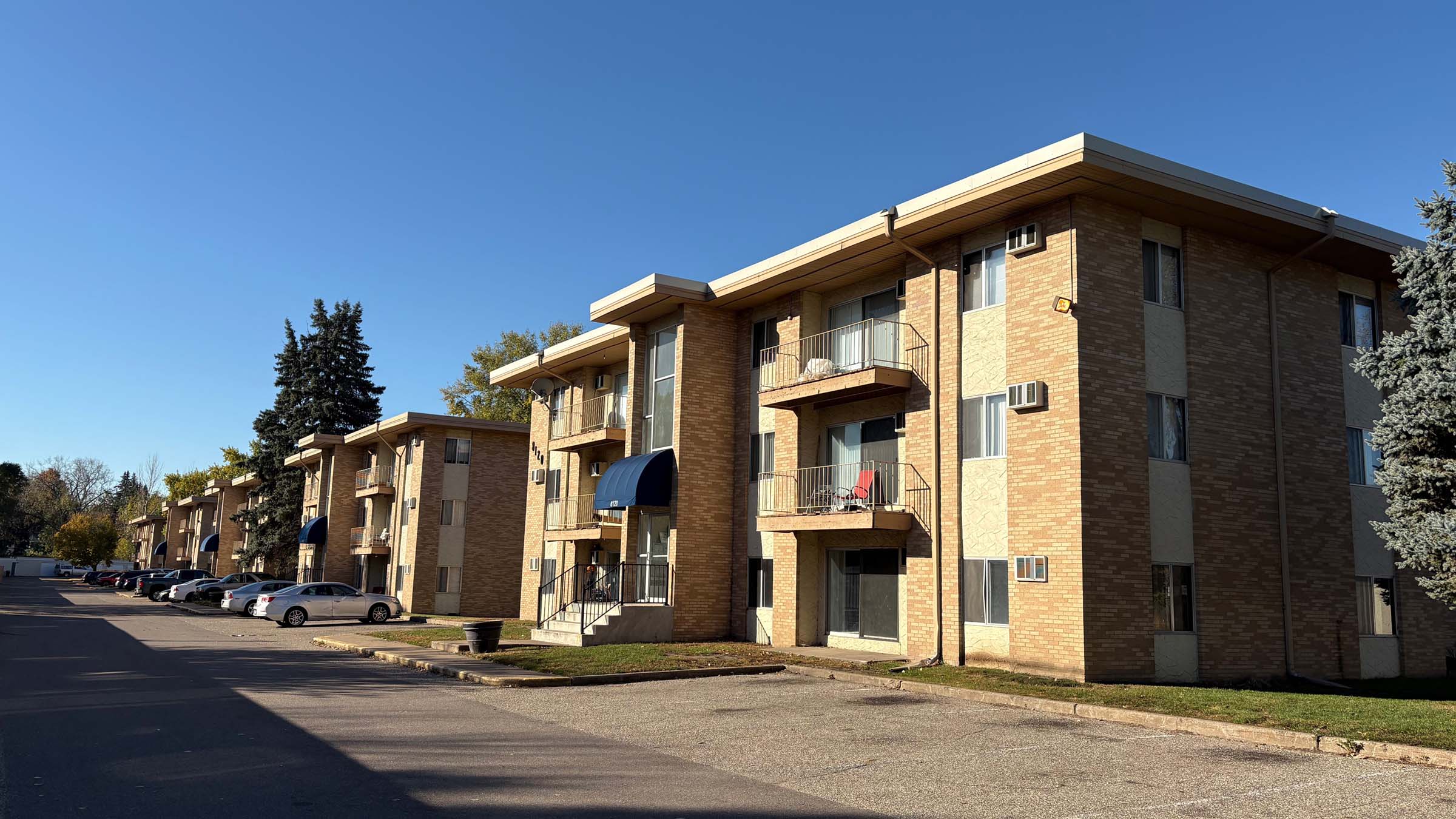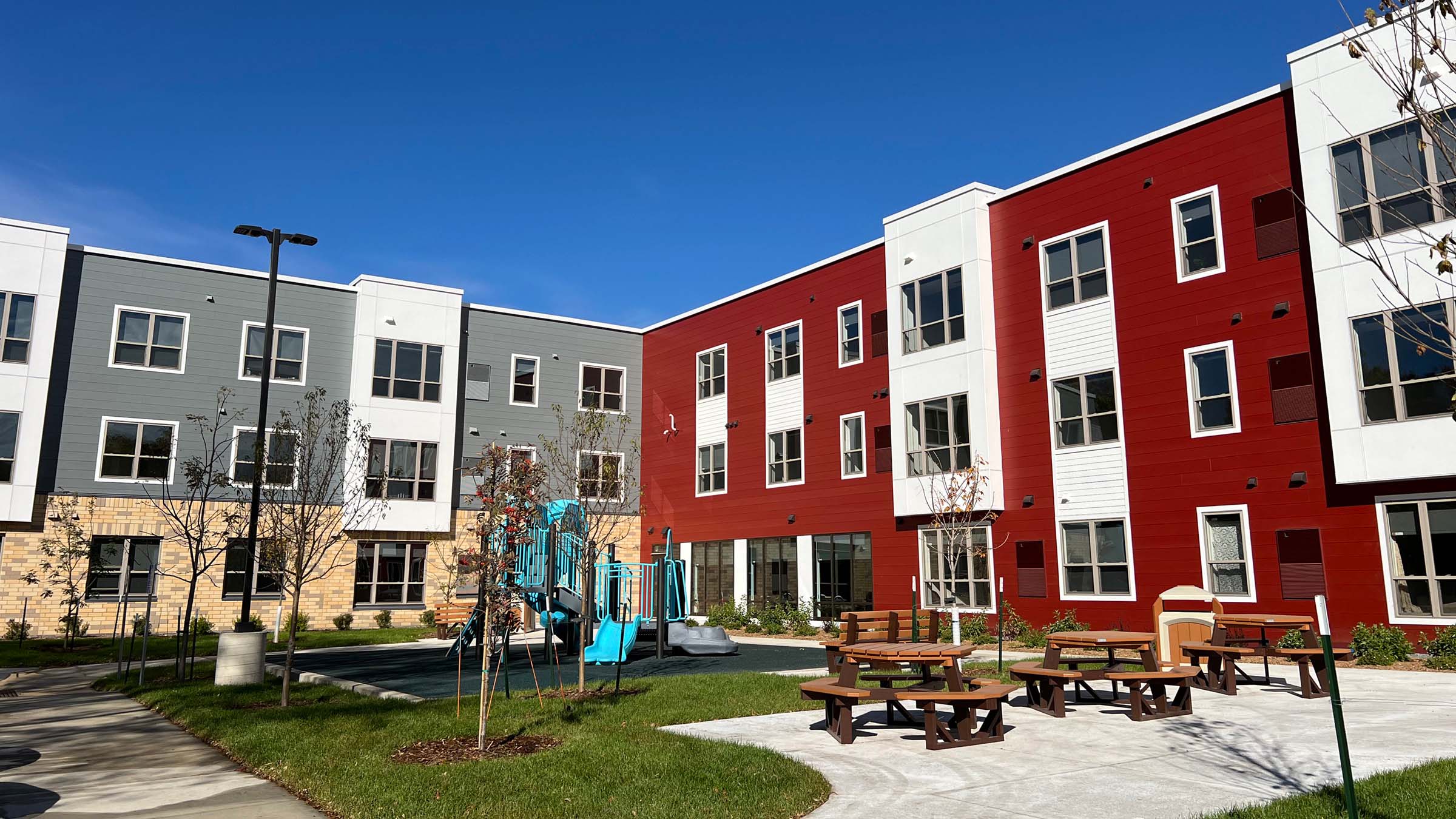Rental housing operators told us they entered 2025 on firmer ground than in 2024, but still struggle to find stable footing in a challenging market. Pessimistic uncertainty was the most common outlook we heard when we asked them about the future, as interest rates present different difficulties across market segments.
These were some of the main themes that emerged in interviews we conducted with 32 housing providers in Minnesota and South Dakota this summer. Discussions like these are part of the work we do at the Federal Reserve Bank of Minneapolis to understand economic conditions within our district. The Community Development and Engagement team at the Federal Reserve Bank of Minneapolis focuses on low- to moderate-income households, which often leads us into conversations about housing affordability. Our outreach work provides important context for quantitative data. It also gives us clues about what trends those data might not yet reflect. And ultimately, it helps inform Federal Reserve leaders’ decisions about monetary policy.
While our housing interviewees generally felt more financially stable this year than last, many felt this stability was hard-won and fragile. Summing up a lot of what we heard, one interviewee from a large firm that operates naturally occurring affordable housing (NOAH)1 told us “the macroeconomic trends are a real problem.”
“In property management you have to stay optimistic,” they continued. “But the interest rate environment is already bad. Everything is more expensive. What if there are mass layoffs in the broader economy and people can’t pay rent? What if there isn’t more investment from the public and private sectors into urban markets to address quality-of-life concerns? Things would get real ugly, real fast. We’re in a very precarious position.”
Despite rising costs, financial positions improved
When asked what aspects of their business were getting more expensive, the most common answer among our interviewees was “everything.” Operators cited maintenance costs and wages rising faster than the inflation rate. “We’ve seen pricing for water heaters, air conditioners, doors, things like that going up way more than inflation,” said one NOAH operator. “There’s nothing that’s not going up faster than inflation.”
Several interviewees explained that tariffs are adding uncertainty to their plans for operating or developing properties. “If some of the tariffs hit at the levels they’ve talked about, it’s going to hit the market really hard,” explained one.
Property insurance was the most commonly cited expense increase. This was true when we talked to housing providers last year, too. The stories we heard both years also mirrored the results of an insurance-specific survey we conducted earlier this year. “Lately, we’re happy if we see a 12 to 15 percent premium increase, but I’ve seen a 23 percent increase this year,” said an interviewee from a large property management firm in South Dakota. “Then, you’re not being renewed if you’ve had a claim, or if your building is too old. And then there are the costs of improving things just to get [insurers] to accept your property.”
Despite increasing costs, most of the people we talked to felt they were in a better position today than they were in last year. Some managers of Class A properties—that is, newer properties that tend to have higher rents2—were concerned about the concessions they felt they needed to offer to fill their units.3
Most felt this was a temporary phenomenon that would work itself out. Interviewees with properties in the Sioux Falls market noted that a lot of new apartments came online over the last few years, and said vacancy rates would eventually drop. As they do, these interviewees argued, concession rates are likely to drop as well. Minneapolis experienced a similar trend in the wake of its apartment boom.
Data show both concession and vacancy rates declining in the Sioux Falls metropolitan area, Twin Cities area, and Greater Minnesota. (See Figure 1.) In the meantime, Class A operators said they were trying to figure out the right balance of incentives and pricing to keep renters from “concession-hopping” between different complexes.
Overall, few interviewees were concerned about demand for their apartments. “Healthier” rents and declining vacancy rates were the largest contributors to interviewees’ self-reported stabilizing financial health.
Multifamily concessions and vacancy rates are down from peak periods across Minnesota and the Sioux Falls area
Source: CoStar.
Construction down today, rents up tomorrow?
While our interviewees felt their firms were better situated for operations in 2025, that didn’t mean they expected to develop new housing. Most echoed reports that construction has flatlined—and predicted a slowdown in 2026. The most oft-cited reason: interest rates.
Ask most people about interest rates and housing, and the first thing they mention will likely be mortgage payments for homeowners. But, as interviewees in every segment of the multifamily market told us, interest rates also heavily influence activity in the rental market.
For new construction, the size of interest payments can make the difference between breaking ground and abandoning a site. Developers often use short-term construction loans to finance the building process. They may also borrow to buy the land and address other costs. For a lender to underwrite a project, these debt payments must be offset by the rents or sale price a property owner expects to collect at the finished property.
“Last year at this time, we had five or six projects ready to deliver,” explained a developer from a large firm focused on urban markets. “Right now, we’ve only got one. We look at 100 to 150 potential investments per week. It’s really hard to make any of them work. Interest rates aren’t at a level where underwriting can work.”
We heard the same story in smaller markets. One Greater Minnesota developer told us that land values are scarcely a concern. They also said that it wasn’t particularly hard to find contractors willing to work at reasonable rates. Instead, “it’s really hard to build housing in Greater Minnesota right now because the numbers don’t work,” they said. “Lower interest rates would certainly help with that, but they seem to be staying steady.” In other words, the rents a property manager can collect in Greater Minnesota typically aren’t enough to offset the debt incurred by a developer.
Several developers also pointed to the costs of infrastructure in growing markets. In expanding markets like Sioux Falls, the inventory of lots with access to basic utilities like water or sewer services is dwindling. A builder’s share of the costs to extend those services to a property adds to the overall cost of development. And as they do the math on their long-term finances, building owners must also consider increasing costs to provide these services to their residents.
“Infrastructure is what’s going to make housing much more expensive. More burden is shifting onto our apartment owners because of changing public policies,” explained one interviewee from a large development company. “Housing does use infrastructure more heavily than most commercial or industrial properties, but it still feels like the cost of development is not equally distributed across these user types. Pipes, wires, and things like that have seen a lot more inflation than other materials over the past decade, too.”
The predicted construction slowdown comes as many economists argue that a lot of housing markets in the nation are undersupplied. More housing would ease the price pressures renters and homeowners face. Slower construction could have the opposite effect.
Price pressures on NOAH properties
Developers aren’t the only ones whose work is highly sensitive to interest rates. Many NOAH operators periodically refinance the mortgages on their properties. Over time, as they pay down their mortgage principal and property values rise, their equity in a project increases. When they refinance, they take out loans based on that equity. These new loans help them maintain their existing properties and finance the purchase of new ones.
Today’s lending environment challenges this model. Higher interest rates are the most obvious obstacle, but there are others. Property owners tell us that lenders are requiring owners to retain more equity in their properties than in the past. In other words, when a NOAH owner refinances, they have less of their wealth available to “cash out.” That means refinancing doesn’t enable them to fund the same amount of rehabilitation work as before.
NOAH operators tell us they typically calibrate their rent increases by comparing their current rents to market rents for similar properties, then assessing any turnover risks. In other words, they know that some tenants in their buildings—and potential renters from the broader rental market—would theoretically pay more than their current rents. The risk lies in the fact that current tenants may leave if rents go up too much. The resulting lost revenue as a unit turns over can outweigh any increase from higher rents.
Overall in the seven-county Twin Cities metropolitan area,4 the market for Class C properties, which tend to be older buildings and have the lowest rents, has seen rents increase 21.8 percent from March 2018 to March 2025. The Class B market, which may include NOAH properties by some definitions, has seen rents increase 17.9 percent, and the Class A market has seen a 9.6 percent increase. (See Figure 2.) By one common measure, inflation totaled 28.3 percent during the same period.
According to our interviewees, the increased costs of doing business, from insurance to interest rates to air conditioners, are leading more NOAH operators to consider (or implement) larger rent increases than they have in the past.
“So much of the future will depend on interest rates,” said an interviewee from a small firm that operates NOAH properties. “My gut tells me we’re going to see a huge surge in rent prices because [building owners] are going to have to cover their costs. And those costs will keep going up, because building owners have cheap debt that will reset.”
“We raised rent by $100 per month just so we could afford to maintain our properties and keep our staff,” said another interviewee, who operates both NOAH and income-restricted affordable properties. “We weren’t retaining employees, or able to get basic maintenance projects done with our cash flow. We were pulling on reserve funds.”
Hard to get into the game
Interest rates also influence who is able to get into the rental real estate market. About half of our interviewees told us their firms had expanded operations in the past year. Some purchased existing properties, others built new units. Several interviewees explained to us why it was easier for larger firms to do so.
“It’s getting easier for the big groups to get bigger, and harder for the small groups to keep going,” an interviewee from a large development firm said. They pointed to the pricing advantage they get for services at their properties. Economies of scale reduce the cost of both building maintenance and staffing.
“The barriers to entry in this market are getting higher and higher,” said one NOAH housing provider. “You have to have cash to buy larger assets.” Otherwise, they explained, the mortgage payments for a building would require rents that were too high above the market rate.
One NOAH operator looking to divest from their properties described an alternative approach they saw gaining in popularity: off-loading properties using contract-for-deed agreements. Contracts for deed allow an owner to negotiate terms directly with a buyer.
“I take a 10 percent downpayment and then get 4 percent interest-only payments for 10 to 20 years,” the owner told us. “At that point the buyer might be able to get a loan on better terms for an outright purchase than they can today, or we can renegotiate. In a worst-case scenario, the buyers give the keys back and I get to keep the downpayment and interest costs.”
Unique challenges for affordable operators
Like last year, owners of lower-priced housing have reported elevated vacancy rates in Minneapolis and St. Paul relative to the rest of the metro area. In their view, these high vacancy rates were driven by potential renters’ concerns about safety in the area’s urban core.
“Pre-2021, my buildings were always at 99 percent occupancy,” said one NOAH operator when discussing their properties in Minneapolis and St. Paul. “They are always priced aggressively, and our rents have basically been flat since 2019. We’ve got an 8 percent vacancy rate now, and it’s gotten worse since last year. If you look at suburbs, they’ve now got higher rents and lower vacancy—a reversal from before. Crime and public safety are the number one contributors.”
For income-restricted properties, interviewees felt inflationary cost increases have outweighed their ability to raise rents. Collecting rents has also been difficult, some told us. These interviewees said fewer tenants are paying on time—or at all—relative to pre-pandemic norms. Pandemic-era relief partially counteracted these drags on revenue, but that aid is now running out—or gone entirely.
The situation led one of the affordable housing operators we interviewed to distinguish between the financial health of their organization and that of its buildings.
“Our organization is financially stronger than last year because we’ve been the beneficiary of some Band-Aids. But our properties are in the same or worse shape as they were last year,” they said. “Our reserves are shrinking or going away because we’ve been living off them. We’ll have to find ways to get cash to prop properties up until we can get them in a better place, sell them, or default. There’s only so many options when you’re out of cash.”
Future unclear, but expectations largely pessimistic
A handful of interviewees—mostly those who worked in South Dakota—felt optimistic about the future. They expected the state’s population centers to continue seeing enough population growth to sustain rent growth, though many still felt that housing construction would slow down after a historic peak in 2022. The long-term fundamentals would make today’s difficulties look like just a speed bump in the rearview mirror, they argued.
One developer told us the great conditions for financing new buildings during the early pandemic era distorted people’s views about the current market. “Looking at the long-term picture, now is when we should be building,” explained one South Dakota developer. “How do we re-shift people’s perspectives back from this ‘new normal’ so that we can get projects moving again?”
Most interviewees, however, felt that the threats outweighed the opportunities. Their responses focused on expected declines in construction volume, decreases in fiscal support for affordable housing, and uncertainty in the broader economy.
“It’s pretty amazing that with the inflationary pressures going on we’ve been able to maintain rents where they’re at,” said an interviewee from a large NOAH provider. “There’s been a massive amount of work to help people avoid a wave of foreclosures and evictions. There will be more problems when people raise rents to offset their higher costs. Because they’ll have to. People don’t have the cash reserves they once had.”
Appendix: About our interviews
The Minneapolis Fed’s Community Development and Engagement division conducted interviews in summer 2025 with 32 firms that either manage or own and manage multifamily rental housing properties in Minnesota or the Sioux Falls, South Dakota, area. Our interviewees collectively manage roughly 90,000 rental units in the two states. Some firms provided third-party management services to other owners, but none of the firms we talked to relied solely on third-party managers for their own properties. While some also owned properties outside of Minnesota or Sioux Falls, our conversations focused on their operations within those geographic areas. The table below lists the sizes and types of firms our interviewees represent.
| Size of firm, by number of units owned or managed in Minnesota and/or the Sioux Falls area | Number of firms |
|---|---|
| Small (<500 units) | 13 |
| Medium (500–2,499 units) | 12 |
| Large (2,500–3,999 units) | 7 |
| Market segment (some firms operate in multiple segments) | |
| Income-restricted affordable housing | 21 |
| NOAH (also known as private market affordable housing) | 17 |
| Class A and/or B | 12 |
| Business model | |
| For-profit | 23 |
| Nonprofit | 6 |
| Public (housing and redevelopment authority) | 3 |
Endnotes
1 NOAH is an industry term used to describe housing that is affordable to low- to moderate-income households but is not income-restricted.
2 According to asset-class categorizations commonly used across the real estate industry, properties are marketed as Class A, B, or C, with Class A properties typically being the most recently built and amenity-rich.
3 “Concessions” are bonuses a property manager might offer to a tenant on move-in or lease renewal. For example, a property manager might give a tenant a month of free rent.
4 These seven counties are Anoka, Carver, Dakota, Hennepin, Ramsey, Scott, and Washington.






